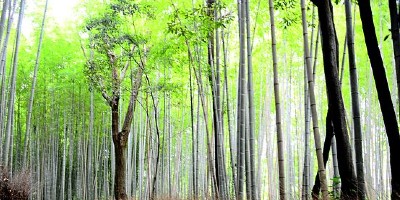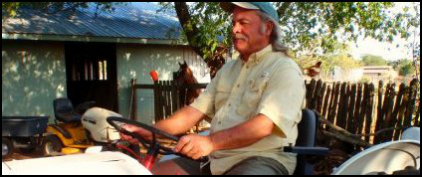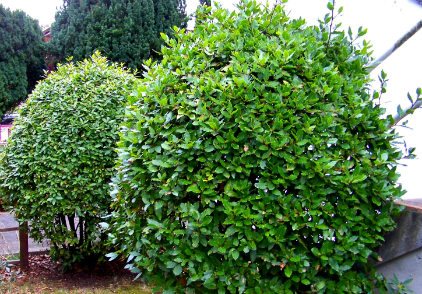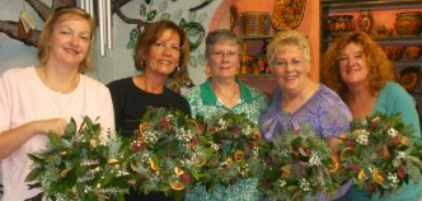 bringing nature, nurseries and gardeners together Nov. 27 2021
|
|
Notes: Barton Springs Nursery needs pots - and lots of 'em! "Due to a nationwide shortage, we're asking you to bring us any smaller sized nursery pots, primarily 4 inch and 1 gallon. If you have any that you'd like to donate, we'd be much obliged. Just bring them on in to 3601 Bee Caves Road the next time you visit us."
Over at the Natural Gardener the recycling theme continues, with a plea for people to reuse plant trays. "Just as you bring your reusable bags to the grocery store, we encourage our customers to bring back any plastic nursery trays for a second ((or third, or more!) use."
 Wakayama Farm: In this radio show, journalist Nick Luscombe travels north of Tokyo to visit owner Tarao Wakayama and his sons, and learns how the Japanese farm bamboo for architecture and food. (22 minutes) BBC Radio ❦
_________________________________________________
Winter Squash-Coconut Milk Soup: when gardener Margaret Roach ended up with "a houseful of squash," she got busy in the kitchen and came up with this fine recipe for a winter eve. A Way to Garden ❦
 Ask Chris: It is the time of year when gardeners buy real Christmas trees - with roots and all! What is the best choice for a living tree, one that will flourish in the garden, after being in the house for a few weeks. - Penny, Austin
Writes Chris: There is not a perfect choice for Austin but my top three are Leyland Cypress, Pinus elderica, and Deodar cedar. Sometimes you can find rosemary trained as Christmas trees but they are short and will never get above 3.5 feet. Austin’s climate - mostly its rainfall - can impact the top three I mentioned. Mostly it's too wet and this can cause the problems. Good luck and happy holidays! ❦
_________________________________________________
Support the Austin Garden. This newsletter relies on donations from readers. Please consider making a donation today. Many thanks ; - ). PayPal ❦
_________________________________________________
Soil, by Matthew Evans. This is a powerful book by an Australian farmer/chef/food writer which balances a celebration of soil with great concerns for its destruction by chemicals. "Good soil isn't just an abstract concept: it's a thing of wonder," he writes. "There are more living things in a teaspoon of healthy soil than there are humans on earth." U.S. publication date: Jan. 4. YouTube book intro

Hancock golf course-to-park: join us in our bid to heal the land of this central Austin golf course, and open it up to become a crown jewel in Austin's park system. (art: Linda Anderson) Hancock Conservancy ❦

Central Texas Gardener: Larry Franklin recognized a need: access to healthy food in underserved communities. For years, he’d helped people grow gardens, but George Floyd’s death prompted a deeper commitment. In 2020, he founded Black Lives Veggies to plant seeds for a better future of nutrition, well-being, and community. Black Lives Veggies ❦

Support the Austin Garden. This newsletter relies entirely on donations from readers. Please consider making a donation today. Many thanks ; - ) PayPal ❦
 The Noble Bay Laurel
by Chris Winslow
One of the most versatile of the small evergreen trees or large shrubs is bay laurel (Laurus nobilis), also known as true laurel or sweet bay.
This evergreen can be grown in full sun, part sun, or even in the shade. One of its greatest and most useful attributes is its delightful aromatic leaves which have a great culinary history.
Dating back to ancient Greece and Rome, heroes and scholars were crowned with wreaths of bay laurel. Artists would often draw Apollo wearing a wreath to represent victory in sports. In ancient Rome, laurel wreaths were symbols of military victories.
The bay laurel grows across the Mediterranean region, from Spain to Greece. Because of its distinctive flavor and fragrance, the leaf of the bay laurel is often used to flavor soups, stews, gumbo, fish,Cajun beans, and a whole host of Mediterranean dishes.
This beauty is easy to grow and can get well over 8 feet tall. It makes a nice entry plant or a striking specimen plant if you grow it in a terracotta pot. It produces small white flowers and occasionally seed.
Its leaves are a dark green and dense, making this plant a good candidate for an evergreen screen. The bay laurel does fairly well during our dry summers but certainly would appreciate some afternoon shade in July or August. In terms of soil, it will flourish in almost any type, as long as there's good drainage.
Also, with Christmas not too far away now, you can take the branches to weave an attractive bay laurel wreath for your front door.

At our nursery It's About Thyme many, many years ago, my wife Diane ran some workshops on Sunday afternoons in early December, where the old house/gift shop was turned into a hive of activity as 10 or more 'young and old Thymers,' gathered around tables, intent on weaving their pretty bay laurel branches around some mustang grape-vine wreaths. The results were stunning. (see photo above) Good times ; - ) Happy Gardening everyone! ❦
|
 It's About Thyme Legacy Publications.
Contact newsletter editor Darrel Mayers with any ideas for articles or interesting links at internationalrain@yahoo.com (hitting 'reply' to this email won't work) |
|
|